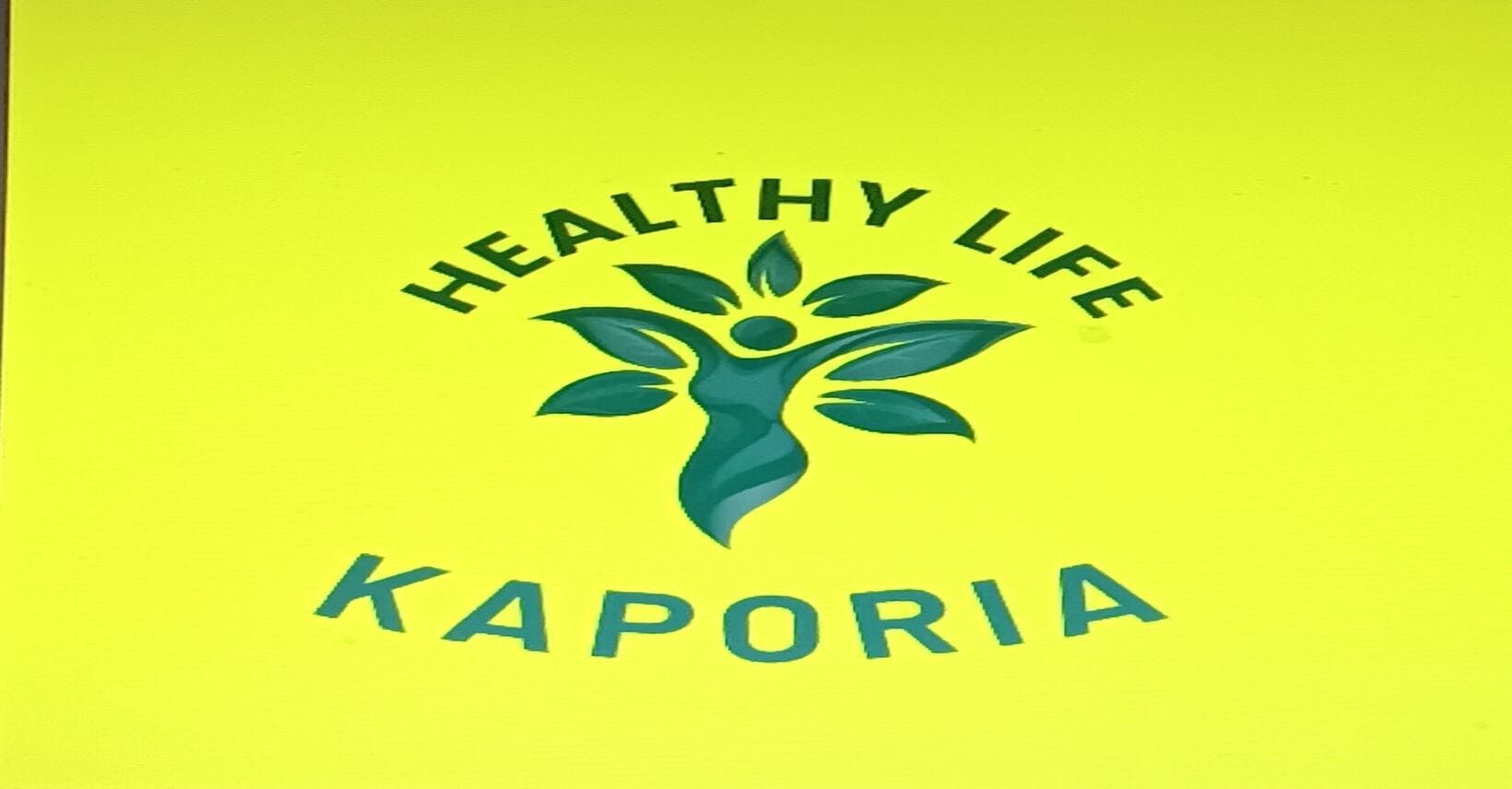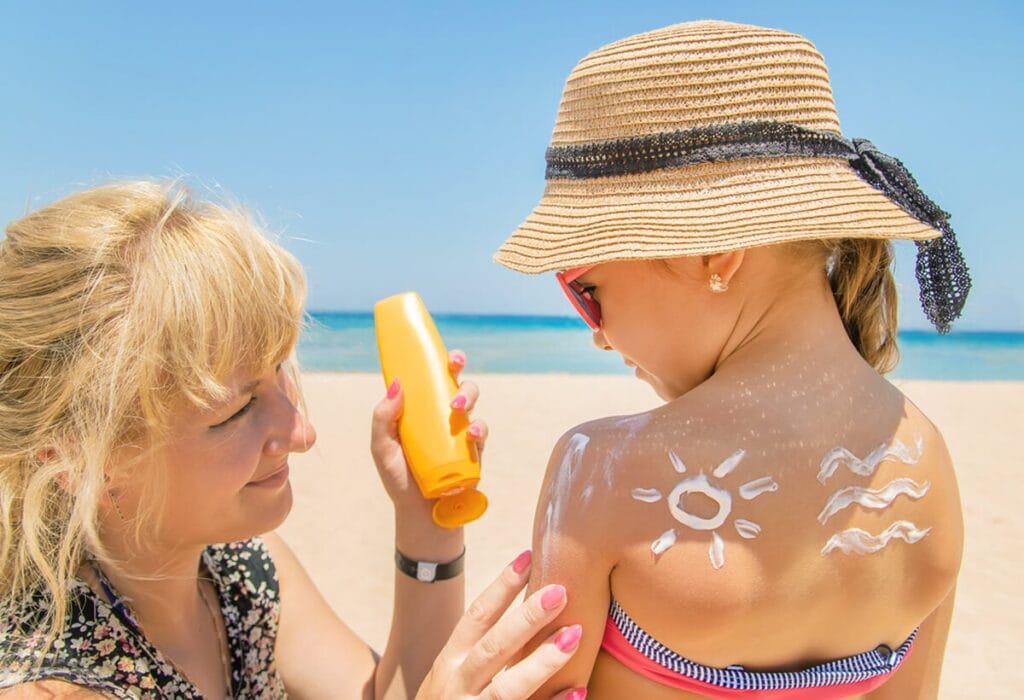[ad_1]
Do you know that analysis exhibits that 97% of Individuals have toxic sunscreen chemicals in their blood? Something that you just put in your pores and skin can enter your bloodstream, and most sunscreens have elements which might be recognized to trigger hurt to folks and aquatic life within just one hour of application.
Right here’s tips on how to discover a sunscreen that’s protected and non-toxic for each you and the life within the ocean.
If in case you have delicate pores and skin, by no means to blindly belief the chemical compounds in most cosmetics and skincare merchandise. Nonetheless, after studying the again of each sunscreen bottle on the pure meals retailer, it seems that a lot of the so-called “inexperienced” and “natural” manufacturers had at the least one extremely questionable chemical ingredient in them!
Why ought to anybody should commerce short-term safety for long-term hurt?
Beware Petrochemical Elements
Most FDA-approved petrochemical-based sunscreens embrace a number of of the next:
- Octylmethoxycinnamate
- Oxybenzone
- P-aminobenzoic acid (PABA)
- Cinoxate
- Dioxybenzone
- Ensulizole
- Emcasule
- Homosalate
- Menthyl anthranilate
- Octocrylene
- Octyl dimethyl PABA
- Octyl salicylate
- Sulisobenzone
- Trolamine salicylate
- Avobenzone, also called Parsol 1789
- Tterephthalylidene dicamphor sulfonic acid, also called Mexoryl SX.
As a result of they’re utilized to your pores and skin, all the petrochemical-based sunscreens are absorbed into your bloodstream in quantities increased than another petrochemical contaminant present in our air, water or meals.
Petrochemical-based sunscreens can have unwanted effects as a result of many mimic estrogen’s effects in our bodies. Additionally they don’t biodegrade, and due to this fact accumulate within the watershed in all places we swim, damaging aquatic ecosystems and coral reefs.
All of those petrochemical elements are cumulatively poisonous, and through the use of them time and again—typically day-after-day—you commerce UV injury for chemical injury in the long run.
In actual fact, a 2000 Swedish study concluded that increased charges of melanoma occurred in those that used sunscreen versus those that didn’t.
Dad and mom have to know that NONE of the petrochemical sunscreen elements listed above are FDA permitted to be used on kids and infants. In actual fact, none of those compounds are examined for SPF on kids’s pores and skin, so merchandise that use these elements and are marketed as “child” formulation are deceptive you.
Sadly, these petrochemicals are present in just about all main model names, and even in lots of the “eco” manufacturers discovered on the well being meals retailer.
Nobody ought to have to decide on between pores and skin most cancers and breast most cancers!
Mineral Sunscreens
There are two FDA-approved mineral sunscreens: Zinc Oxide and Titanium Dioxide. Zinc Oxide is the one ingredient permitted to be used on infants and kids, and can be the primary ingredient in most diaper lotions.
Zinc oxide is best than titanium dioxide in sunscreens for the next causes:
- Zinc oxide has a broader UVA and UVB absorbance spectrum than Titanium dioxide, so it offers higher UVA safety.
- Zinc oxide is safer as a result of it creates fewer free radicals than Titanium dioxide.
- Zinc oxide is the one lively ingredient permitted to be used on infants underneath 6 months of age; Titanium dioxide just isn’t.
- Zinc oxide is created from a vital mineral nutrient that’s additionally discovered in lots of multivitamins; Titanium dioxide is created from a heavy steel that’s poisonous when ingested.
Micronized vs. Nanoparticles
Nanoparticles are outlined as having a diameter of lower than 100 nanometers, (0.1 millionth of a meter) which is concerning the dimension of a virus. Micronized particles, alternatively, are outlined as having a diameter of lower than 100 microns, (0.1 thousandth of a meter) which is concerning the width of a human hair.
Micronized mineral sunscreens have been available on the market for many years, and have a whole lot of supportive knowledge on their security. Nanoparticle mineral sunscreens, nonetheless, are very new and have been marketed by chemical producers as an revolutionary solution to make their formulation much less whitening in your pores and skin.
The issue with nano sunscreens is that the long-term security of those particles is unknown, and a few current scientific research, together with one published in Scientific American, have demonstrated these particles can injury aquatic ecosystems once they wash off of your physique. Different potential points embrace elevated pores and skin penetration and free radical creation within the physique.
Producers typically market their nanoparticle sunscreens underneath the “micronized” umbrella, since technically nanoparticles have been micronized very finely. That is dishonest advertising and marketing. Sadly, the one method you may inform if a producer just isn’t utilizing nanoparticles, is that if they are saying it’s “Non-Nano.” Search for that on the label.
Poisonous Components
Many sunscreens—even those with out petrochemical or nano-sized elements—can have questionable or toxic additives. For instance, artificial vitamin A, typically referred to as Retinyl palmitate or retinol, is added to many sunscreens and beauty merchandise as an antioxidant, anti-aging ingredient.
Sadly Retinyl palmitate has photo-toxic and photocarcinogenic properties, in response to several studies. In different phrases, when uncovered to daylight, the artificial vitamin A in sunscreens and cosmetics does the reverse of what it’s presupposed to do, and turns into dangerous to your pores and skin, probably encouraging the expansion of tumors.
Many sunscreens additionally comprise preservatives, parabens and different chemical components you actually need to keep away from consuming. In spite of everything, pores and skin may be very absorbent, and something you set in your pores and skin goes instantly into your bloodstream. (Which is exactly why some medicines are administered in patch kind.)
These elements additionally also can have a devastating impact on coral reefs and different aquatic life.
Is Sunscreen Actually Vital?
The reply is “perhaps,” and solely when you may’t management how a lot solar you might be uncovered to. As an example, for those who work exterior all day as a part of your job, for those who plan on spending the entire day on the seashore, or if it is advisable to defend delicate areas of your face, like round your eyes, which might be significantly prone to photo-aging, it’s good to make use of a protected, non-toxic sunscreen.
Even smarter nonetheless, is to have an umbrella, a hat, and protecting clothes.
However underneath most circumstances, you don’t need to block your physique’s skill to supply vitamin D, and may go with out sunscreen. The very fact is, getting some solar publicity day-after-day is without doubt one of the finest issues you are able to do in your well being.
Solar publicity permits your physique to naturally produce your personal provide of vitamin D, and consultants agree that that is the finest type of vitamin D you will get.
Average day by day solar publicity has additionally been proven to assist protect against as many as 16 different types of cancer, together with; pores and skin (sure, paradoxically), breast, colon, endometrial, esophageal, ovarian, bladder, gallbladder, gastric, pancreatic, prostate, rectal, and renal cancers, in addition to non-Hodgkin’s lymphoma.
A current research carried out by researchers on the Karolinska Institute in Sweden, followed nearly 30,000 women over 20 years, and located outcomes that recommend mortality fee is increased for individuals who keep out of the solar than those that don’t.
Optimizing your vitamin D ranges can actually cut your risk of several cancers in half!
You’ll want to reveal extra than simply your face and fingers to get optimum vitamin D although. In actual fact, you really want to reveal your face, full arms, fingers, legs from knee down and toes—or about 40% of your physique—to get sufficient of this important vitamin. However do one of the best you may.
The purpose to recollect is that when your pores and skin turns the lightest shade of pink (for those who’re lighter skinned), or begins to darken only a shade (in case you are darker skinned), it’s time to get out of the solar or cowl up. This could possibly be just some minutes for some fair-skinned folks, or as much as 15-20 minutes for darker skinned folks.
Previous this level of publicity, your physique doesn’t produce any extra vitamin D, and also you’ll start to get solar injury, and sunburn is by no means good in your well being.
Supplementing with microalgae reminiscent of spirulina, astaxanthin, and chlorella or blue-green algae could make the physique naturally extra proof against sunburn (and assist heal one shortly, too!).
Astaxanthin has extraordinary antioxidant powers to guard your pores and skin towards sunburn, and supplementing with 4 mg a day for at the least a month can probably double (at the least) the time you may ordinarily spend within the solar with out burning.
Astaxanthin is fats soluble, so it should be taken with a wholesome meal that features loads of fats otherwise you simply gained’t soak up it.
You May Additionally Be Desirous about…
How one can Discover a Secure Sunscreen
When in search of a protected, non-toxic sunscreen, you need to search for the next three labels:
- Reef-Secure or Reef-Pleasant
- Non-Nano
- Zinc Oxide
You may also search for the Cruelty Free, Perfume Free, or Gluten Free labels, if these are issues for you.
When you discover a sunscreen that meets these standards, you may search the Skin Deep Sunscreen Database for sunscreen manufacturers that rating a 1 for lowest hurt.
We often purchase Badger Sunscreen as a result of it has non-whitening, micronized zinc oxide, smells scrumptious, and is made by a small, family-run enterprise. I also can get it at my native grocery retailer. Badger is well-rated by the Skin Deep Sunscreen Database as a 1 for lowest hurt.
Badger Sunscreen incorporates:
- Non-Nano, Uncoated Zinc Oxide 22.5%
- Natural Sunflower seed oil,
- Natural Beeswax,
- Natural Seabuckthorn fruit extract,
- Natural Jojoba seed oil,
- Natural Orange peel oil,
- Natural Tangerine peel oil
- Vanilla fruit extract
- Tocopherol (Sunflower Vitamin E)
Different family-friendly sunscreens that rated 1 for security in EWG’s sunscreen database embrace:
No matter sunscreen you select to make use of this summer season, the Skin Deep Sunscreen Database is a superb useful resource for checking its security and influence on the atmosphere.
Additionally take a look at the Skin Deep Cosmetics Database, made by the identical great non-profit. It’s an excellent useful resource for researching the protection of all your make-up, skincare and wonder merchandise, so that you is usually a smart client, and select private care objects that may defend the wholesome of your loved ones and the atmosphere.
Up to date June 1, 2023.
[ad_2]
Source link


